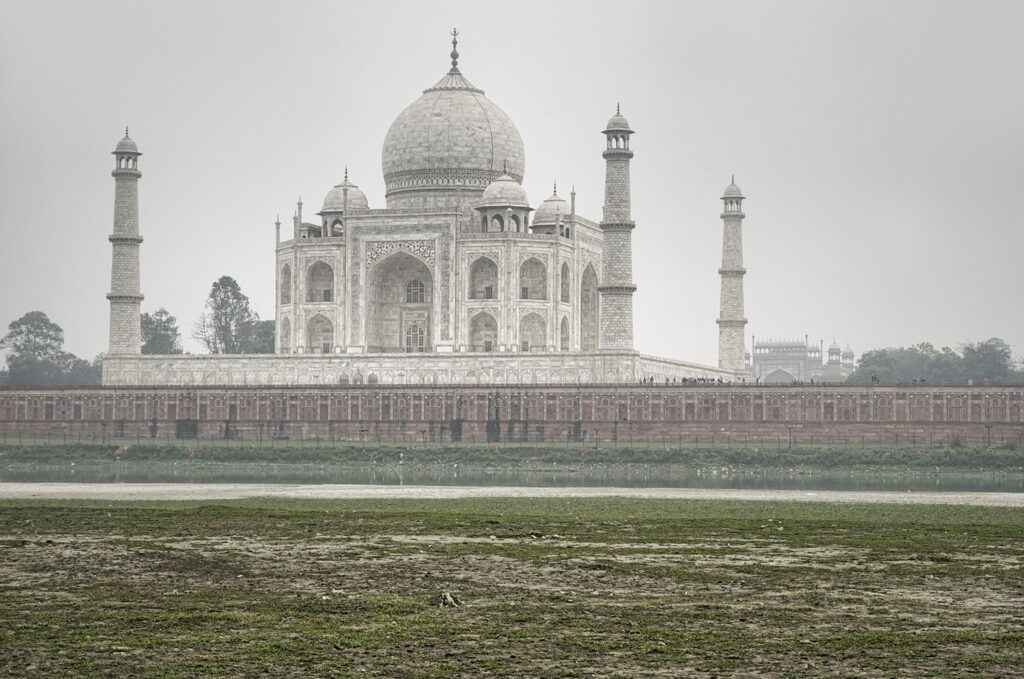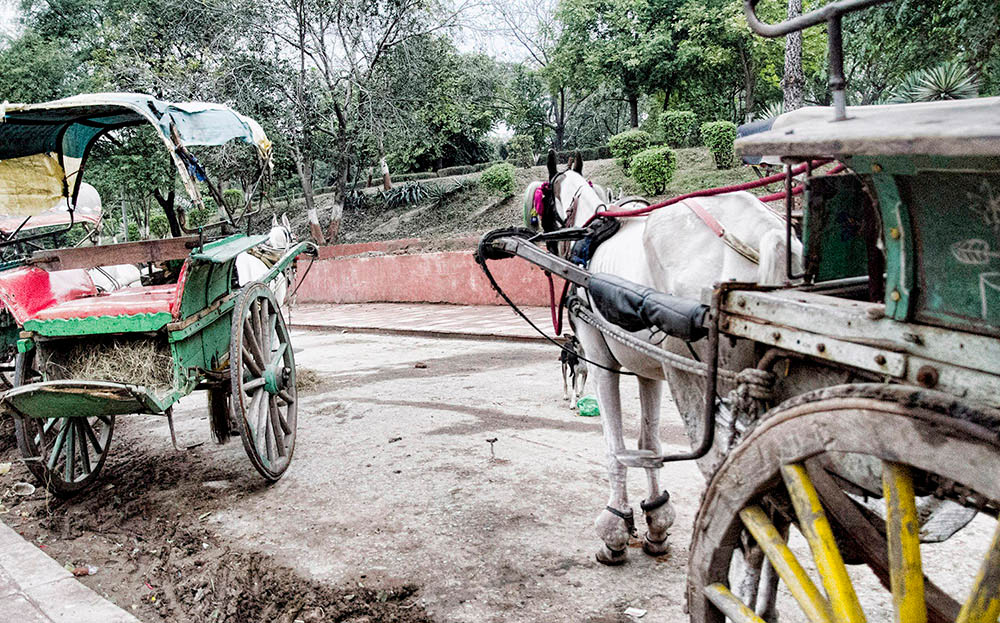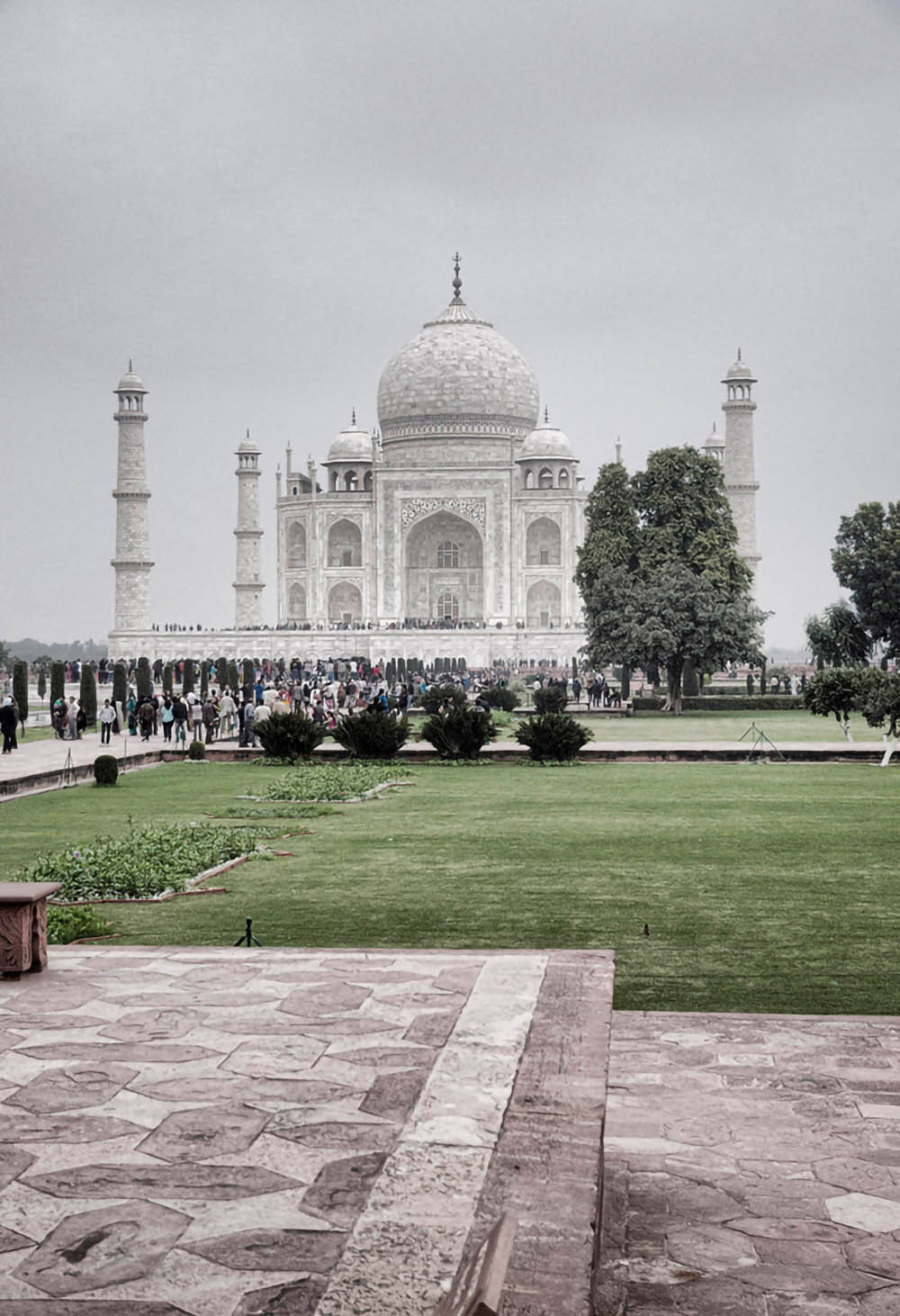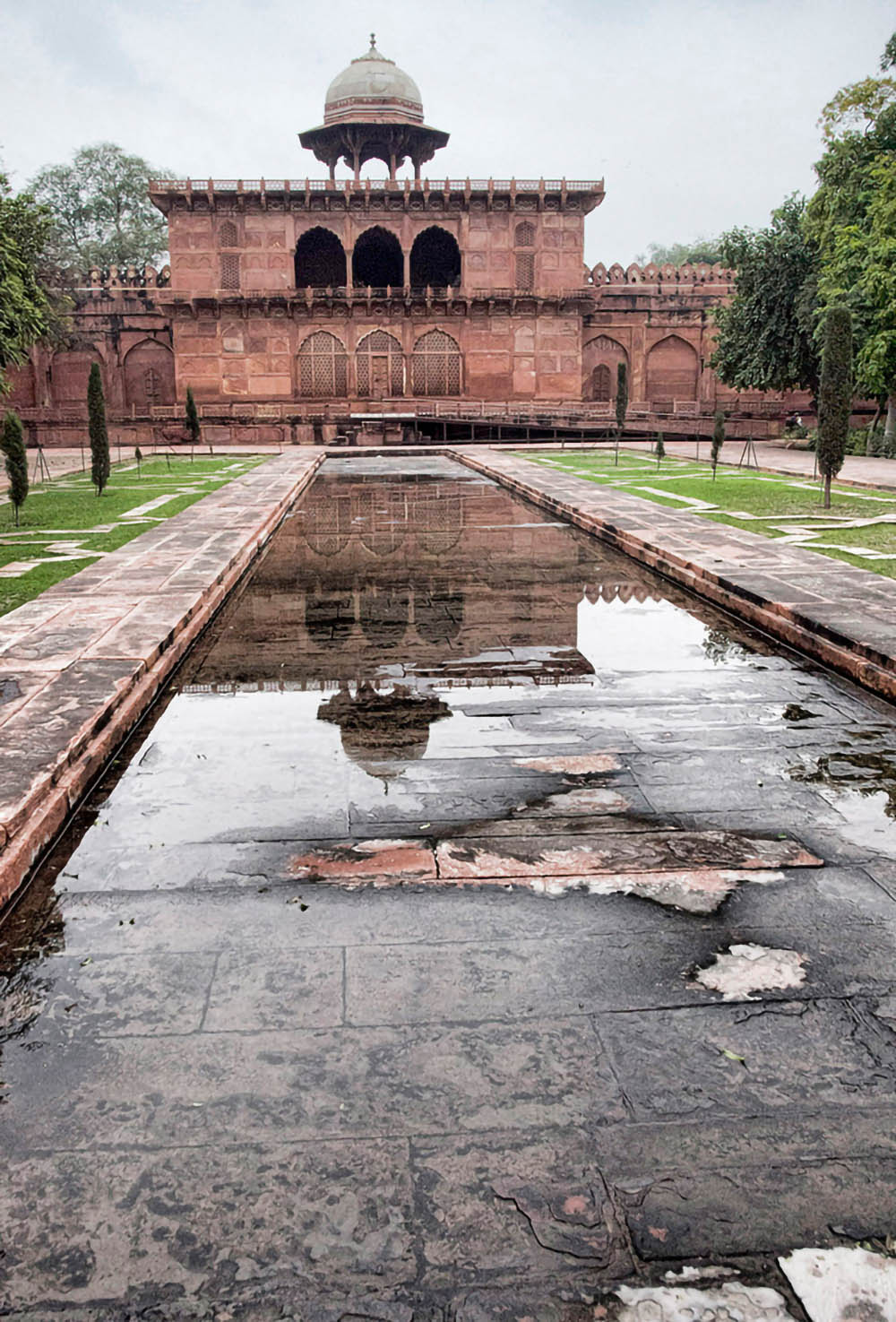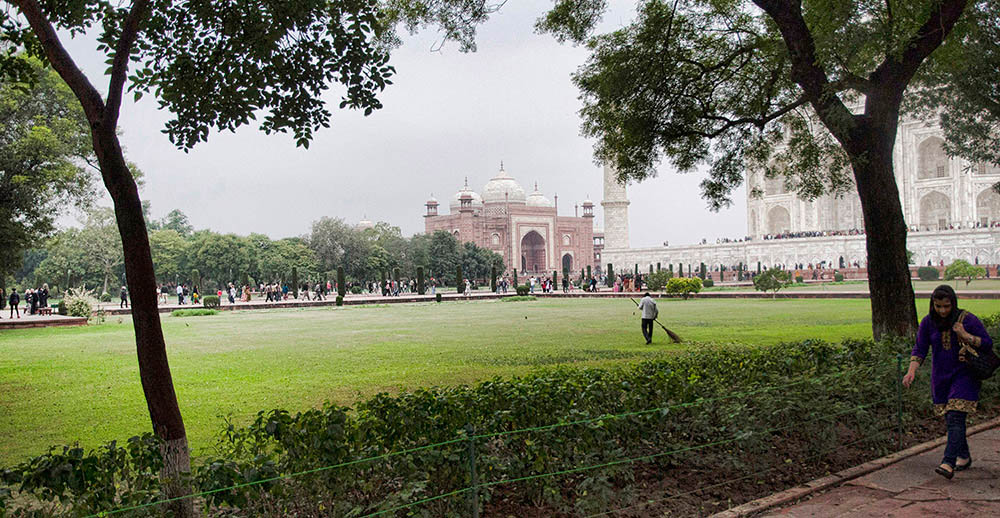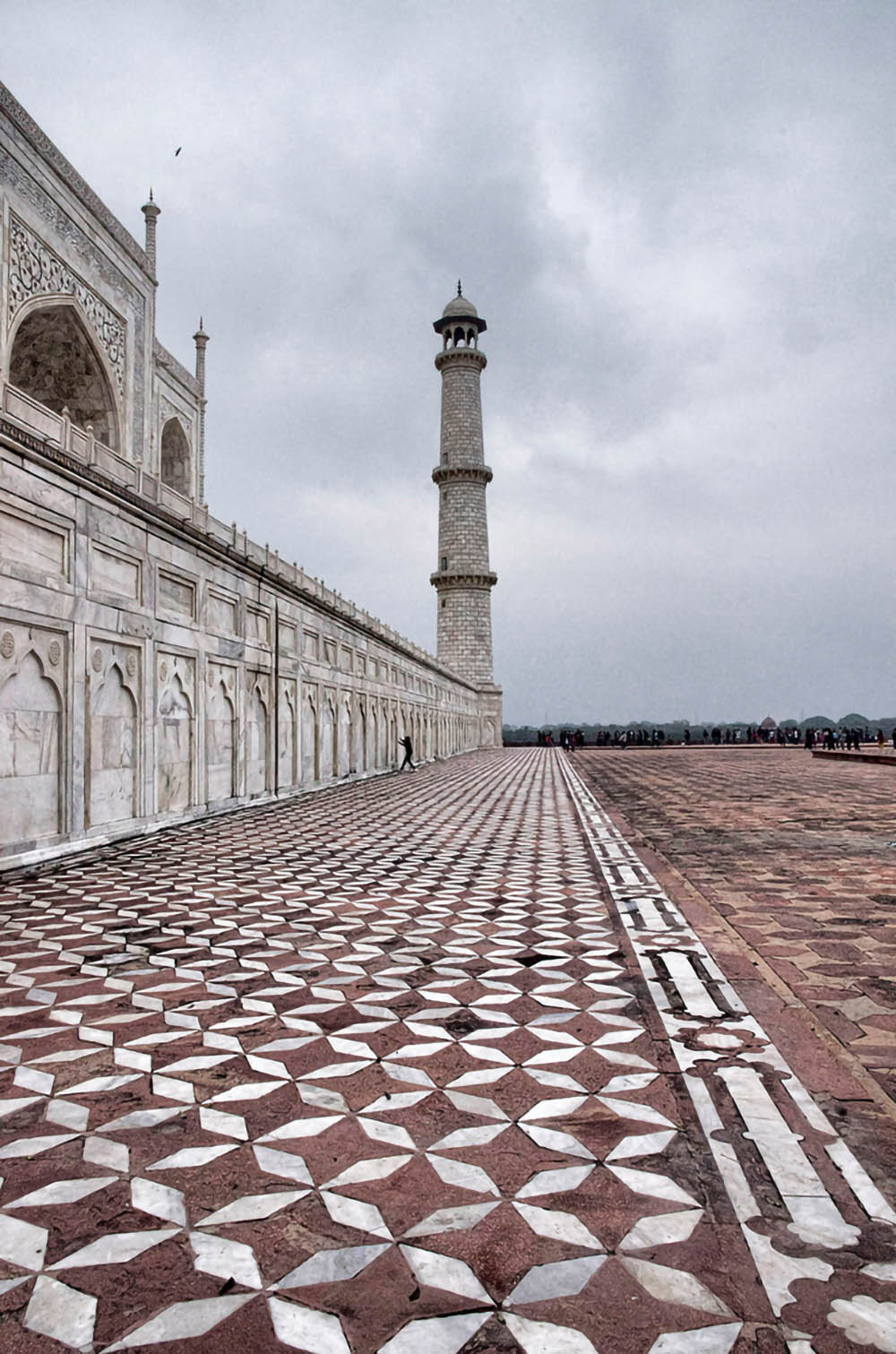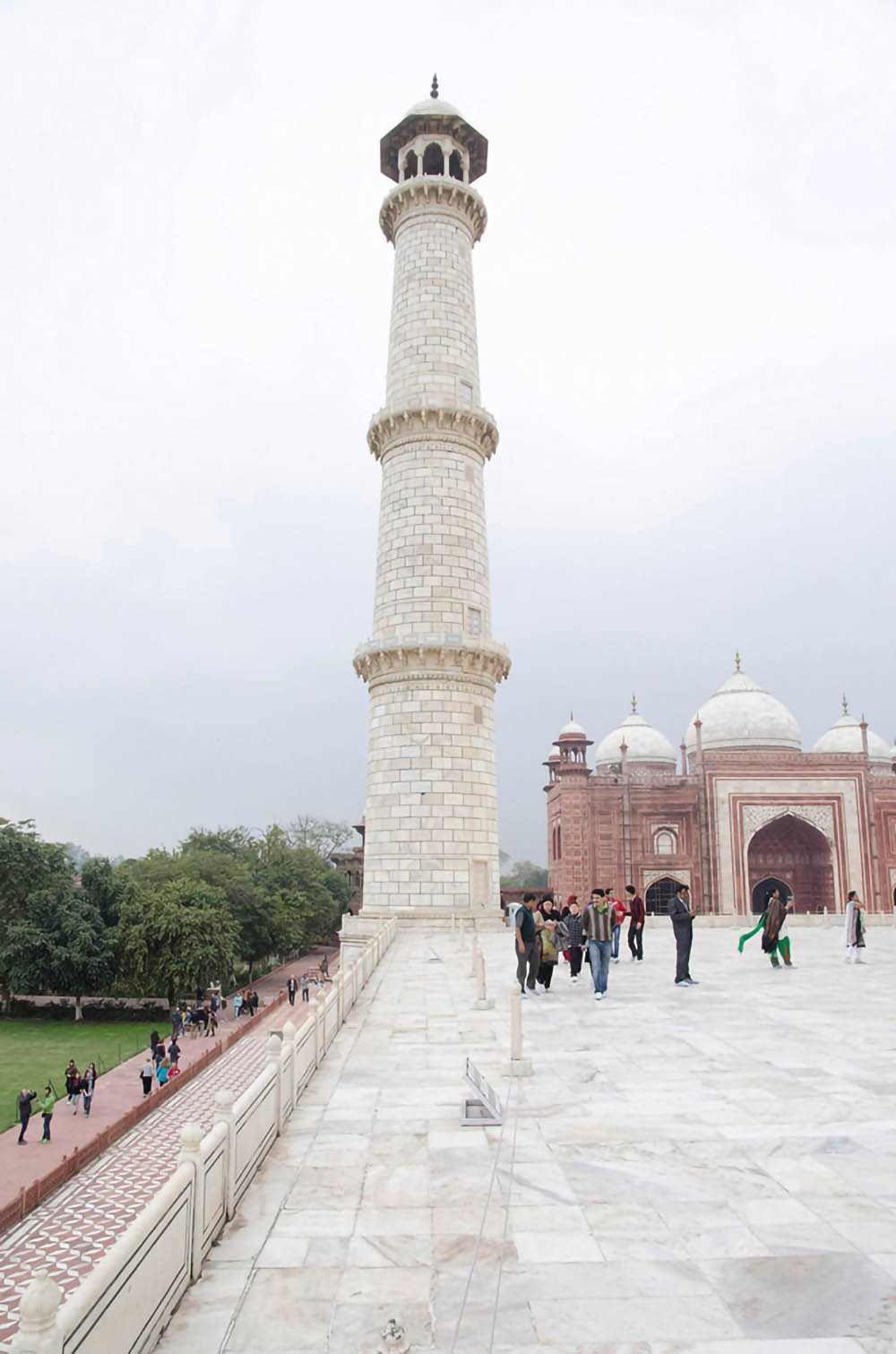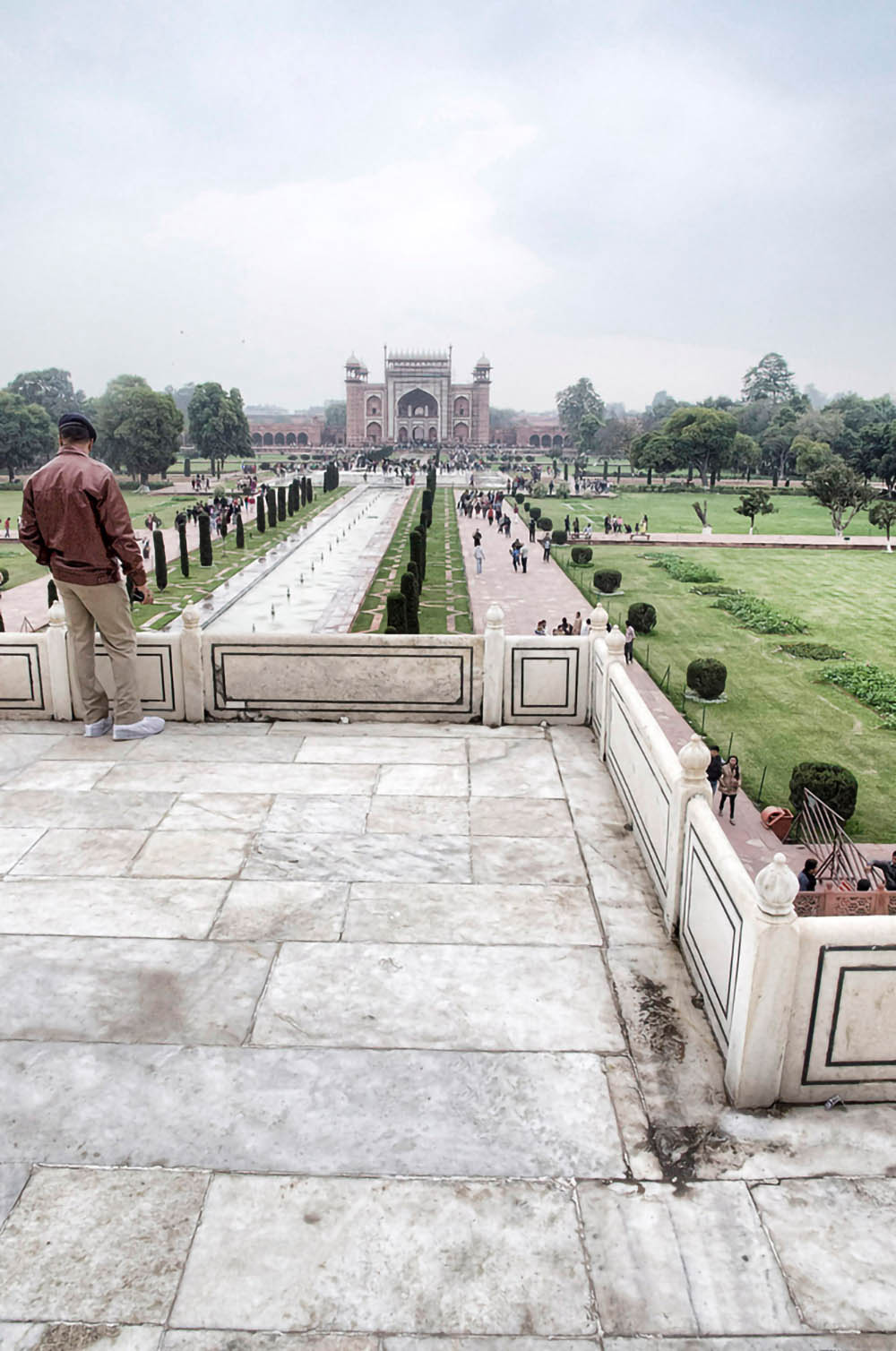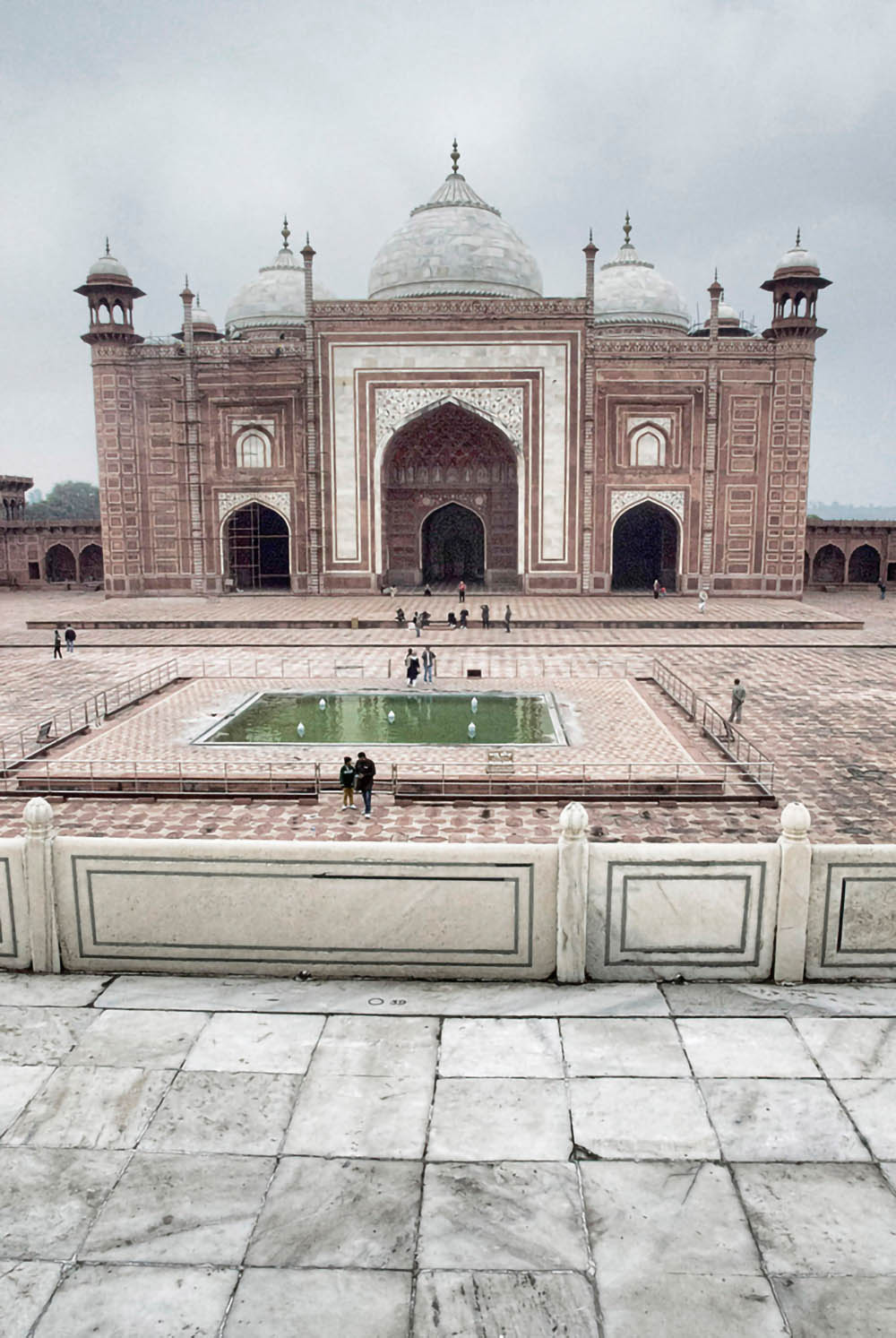The mighty Taj Mahal. An emotional moment for me as I never thought I would stand in front of the Taj Mahal. Still to this day, I don’t believe I was there. It was a dream come true.
The mighty Taj Mahal. Standing before it was an emotional moment for me—something I never thought I’d experience. Even now, I can hardly believe I was actually there. It felt like a dream come true.
In Agra, there are two essential sights: the Taj Mahal and the Agra Fort. There is also the so-called “Mini Taj,” but I only viewed it from a distance. From a photographic standpoint, it didn’t hold the same intrigue. The real fascination lay in the history of the Agra Fort and its deep connection to the Taj Mahal. With the help of a guide, we uncovered the stories behind these remarkable monuments.
The present-day Agra Fort was built by the Mughals, though a fort had stood on the site since at least the 11th century. Originally a brick fortress held by the Hindu Sikarwar Rajputs, it changed hands several times during battles between Hindus and Mughals before finally coming under the control of Akbar. Recognizing its strategic importance, Akbar made it his capital when he arrived in Agra in 1558.
It was during the reign of Akbar’s grandson, Shah Jahan, that the site assumed much of its current grandeur. Legend has it that Shah Jahan built the Taj Mahal for his beloved wife, Mumtaz Mahal. Unlike his grandfather, who favored red sandstone, Shah Jahan preferred white marble, often inlaid with gold and semi-precious stones. One story tells of a palace he built for his two daughters—one section in marble, the other in red sandstone. Can you guess which daughter he favored more?
Shah Jahan’s later years were marked by tragedy. Deposed by his son Aurangzeb, he was confined within the Agra Fort, said to have spent his final days in Muasamman Burj, a tower with a marble balcony overlooking the Taj Mahal—the very monument of love he had built.
Interestingly, the Taj Mahal itself is not made entirely of marble. Its core structure is red brick, like the fort, with marble applied as an outer layer. The brick provided strength, while the marble gave it beauty. But the enormous cost of the Taj Mahal contributed to Shah Jahan’s downfall. His son, outraged by his father’s extravagance, seized power and placed him under house arrest in the fort, where he remained for years until his death.
1, 2 Excerpts from Wikipedia

